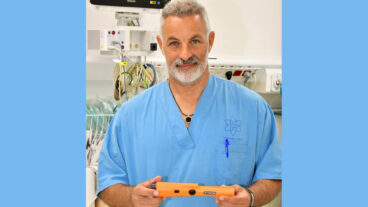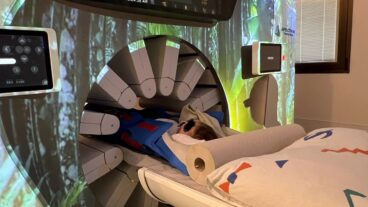White wine drinkers don’t yet receive the health benefits attributed to red wine known as the ‘French paradox,’ researchers say.A Technion professor is working on a white wine that, like the reds, will be good for your heart.
Are you a wine drinker who chooses red over white for the sake of lower cholesterol, but don’t really love the taste? Prof. Michael Aviram shares your preference, and he’s trying to find a solution.
Aviram has a passion for wine. Not as a drinker, but as a researcher. “For the last 20 years or so, my love has been studying the relationship between cholesterol and heart attacks in cardiovascular diseases,” said the 52-year-old Technion biochemist, who also heads the Lipid Research Laboratory at Haifa’s Rambam Medical Center.
“Everybody knows that a high level of blood cholesterol is a major risk factor for heart diseases, but not too many people know that 30 to 40 percent of heart attack patients have normal levels of cholesterol,” Aviram said. It’s often the quality of cholesterol, not the quantity, that lands someone in the hospital with a heart attack.
Smoke, chemicals, bacteria, even psychological stress can oxidize, or damage, cholesterol. That oxidized cholesterol can build up and clog a patient’s arteries, just as ordinary cholesterol can when there’s too much of it in the blood. A variety of chemical anti-oxidants are on the market, but Aviram’s lab favors natural sources like fruits and vegetables, whose skins hold high levels of flavonoids, natural anti-oxidants, which he calls “goodies.” The most flavonoids, he’s found, exist in pomegranate juice and red wine.
Flavonoids are the key to the low incidence of heart disease among the French, who consume large quantities of cholesterol-rich foods and a lot of red wine. Aviram’s 1995 study provided the first scientific answers to the medical mystery previously known as the French Paradox.
The research found that it’s all in the skin of the grapes – home to the flavonoids. To make wine, grapes are squeezed, yeast is added to cause fermentation and the grapes’ natural sugars are converted into alcohol. For red, grapes are left in contact with the skin for long periods, running into weeks; for white, the skin is removed immediately after the grapes are squeezed, leaving fewer flavonoids in the remaining liquid. For the past six years, cardiologists have encouraged their patients to drink a glass of wine a day – so long as it’s red.
That didn’t suit Aviram’s taste, since he prefers a nice white. For almost a decade, though, the father of three kept that bit of personal information secret from his cholesterol-conscious colleagues. Now, his new research – unveiled in April at an international meeting on wine science in California – has freed him to share the truth.
The trick was finding a way to extract the flavonoid “goodies” from grape skins without leaving them for an extended period in the fermentation process. That was accomplished by adding extra alcohol before the fermentation process produced its own. “This external alcohol extracted the goodies from the skin of the grape in a short period of time, about a day,” Aviram said. “Because the time was so short, we still have the aroma, the taste, of white wine, but we also have the flavonoids.”
The system, though, has two flaws. First, the wine is too potent, with an average alcohol percentage of 16 to18 percent, rather than the 12 to14 percent usual in whites. And because the external alcohol impedes the conversion of the grapes’ natural sugars to alcohol, the ensuing beverage is sweet rather than dry – while the real market, of course, is for dry whites, not dessert wines.
Finding human subjects to help Aviram with his research might sound easy, but it isn’t. Yes, he can get Technion students to drink wine and give him blood samples. “For $200 a student will drink or eat anything,” Aviram said. “But what I need to do is look at the effect on arteries” – and that can’t be done yet in an inexpensive, non-intrusive way. So Aviram’s research to date has been on mice – after removing the gene responsible for ridding the rodents’ bodies of cholesterol.
“Have you ever seen a mouse with a heart attack?” Aviram said. “I have.”
Aviram said his paper was received warmly at the California meeting in April. He assumes that some wineries already make dessert wines that are, by coincidence, flavonoid-rich.
The next step, then, is figuring a way to make flavonoid-rich dry whites. He’s also looking for a non-alcoholic treatment, perhaps an anti-oxidant pill made from the skin of grapes. And because he finds it “difficult to recommend that the public drink a lot of wine,” he continues to emphasize that too much alcohol isn’t good for anyone.












